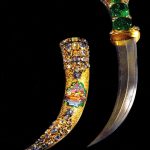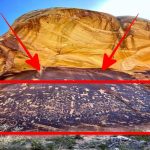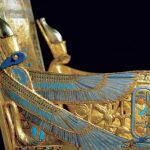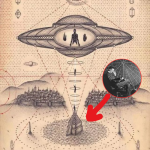It has been confirmed that Tutankhamun’s scarab brooch originated from a direct impact with a comet.
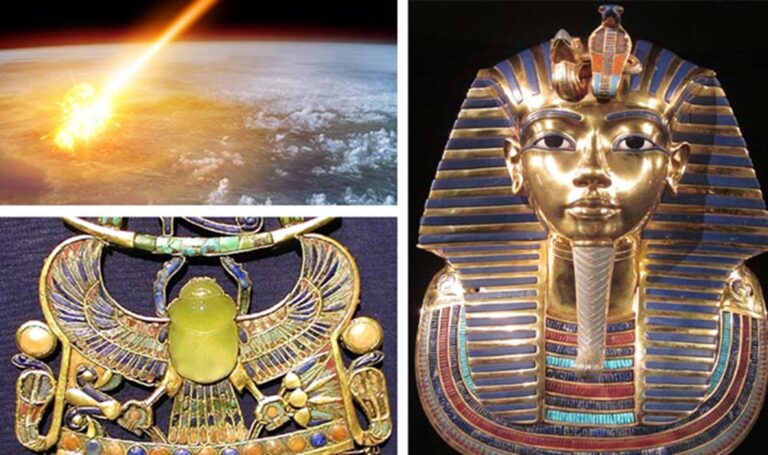
The fascinating story of the origins of a component in Tutankhamun’s scarab brooch has been furthered this week. It has been established that some of the material found in that brooch was result of a phenomenal event that occurred 28 million years ago. The consequence of an incomprehensibly ancient comet that had come hurtling through the cosmos towards the Earth created a component which was subsequently used as the centerpiece of King Tut’s brooch. But there has been some debate as to how exactly this event created the glass. Now scientists from Australia and Austria think they have the evidence that provides an end to the argument.
Small But Significant
The findings at the tomb of Tutankhamun were numerous and a small artifact such as a brooch might be over-shadowed by the weightier items. But oftentimes unassuming items have a deeper story than is at first evident. This impressively preserved brooch has such a deep history it could not be imagined and it came to light only through thorough research from multiple disciplines. The brooch contains a striking yellow-brown scarab composed of a yellow silica glass stone procured from the sand of the Sahara and then shaped and polished by some ancient Egyptian artisan. It is this scarab that has perhaps the most interesting history of all.
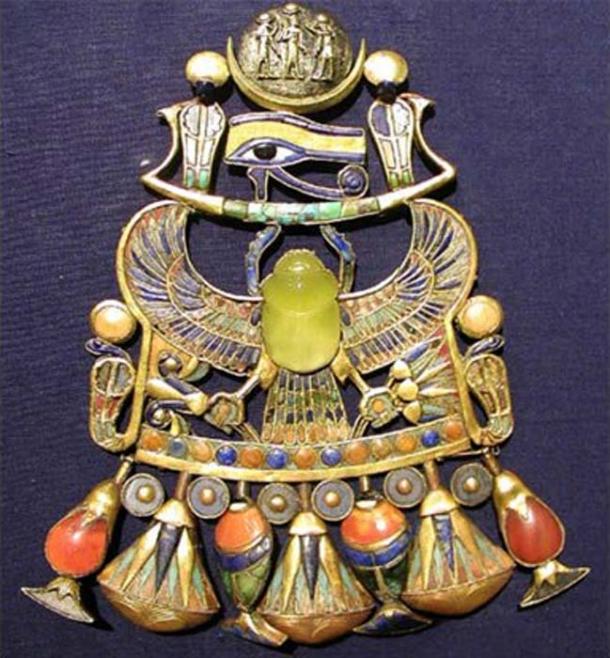
Tutankhamun’s Brooch Holds Evidence of Ancient Comet Striking Earth
Unlocking The Sands Of Time
Chemical analysis revealed that the silica glass from this desert was originally formed 28 million years ago, when a comet entered the earth’s atmosphere above Egypt. The sand beneath it was heated to a temperature of about 2,000 degrees Celsius and resulted in the formation of a huge amount of the yellow silica glass, which lies scattered over a 6,000-square kilometer area in the Sahara Desert.
In 2017, this silica glass was one of the clues that led Professor Jan Kramers of the University of Johannesburg, South Africa, and colleagues to a remarkable discovery. The other key find was a small black diamond-bearing pebble, which the researchers named ‘Hypatia’, that had been found by an Egyptian geologist several years earlier. This gave the clues needed to detect the cataclysmic event and the resulting composition of the desert. The detection of tiny diamonds within the stone which are the result of extreme pressure usually deep within the earth’s crust showed it to be remarkable. This pebble was found on the surface and so the diamonds formed were the result of a massive shock – an impact of some kind. The study team’s conclusions were that the pebble represented the very first known specimen of a comet nucleus (rather than an ordinary meteorite) and provided the first clear proof of a comet striking Earth millions of years ago.
Latest Research Backs Up This Claim
However, there was some debate as to the specifics of how this cataclysmic event created the glass. There were still questions as to whether the event was an actual comet strike or a near miss.
In a press release by Curtin University, Dr Cavosie, from the Space Science and Technology Centre in Curtin’s School of Earth and Planetary Sciences, said, “It has been a topic of ongoing debate as to whether the glass formed during meteorite impact, or during an airburst, which happens when asteroids called Near Earth Objects explode and deposit energy in the Earth’s atmosphere.”
The research team believes new evidence found in their research, published in the Geology journal, dismisses the airburst proposal completely. The study states that although both an airburst or a comet impact could melt the desert sand, they found the glass contained a rare mineral called reidite, and this they say could only be shocked into existence by the power of an impact, which is millions of times stronger than an airburst. Dr Cavosie states:
Both meteorite impacts and airbursts can cause melting, however, only meteorite impacts create shock waves that form high-pressure minerals, so finding evidence of former reidite confirms it was created as the result of a meteorite impact.
Live Science reports the study as stating, “airbursts create shock waves up in the air that can be thousands of pascals (a unit of pressure), asteroid impacts cause shock waves of billions of pascals on the ground.”

Comet Hale-Bopp taken in the vicinity of Pazin in Istria/Croatia (CC BY SA 2.0)
Comet material had never been found on Earth before except as microscopic sized dust particles in the upper atmosphere and in Antarctic ice. Space agencies have spent billions to secure the smallest amounts of pristine comet matter and bring it back to Earth, but Kramers and her team have a new approach for studying this material without having to go to space to get it.
But what is the importance of this work?
“Comets contain the very secrets to unlocking the formation of our solar system and this discovery gives us an unprecedented opportunity to study comet material first hand,” said Professor David Block of Wits University, a key researcher on the Kramer team.
